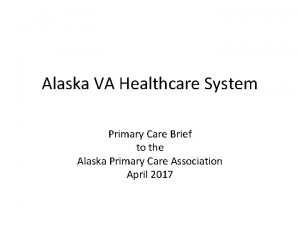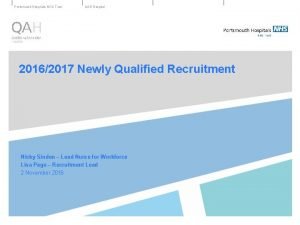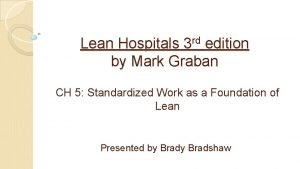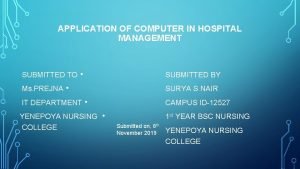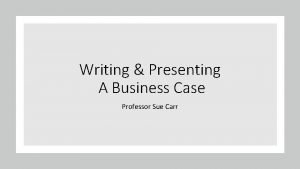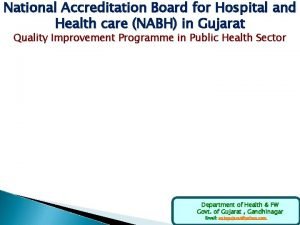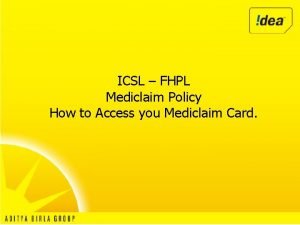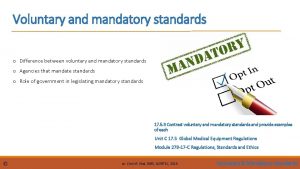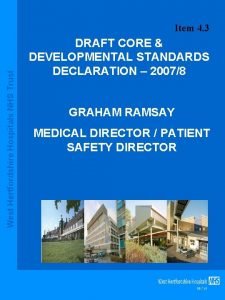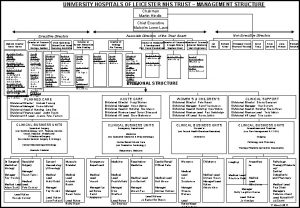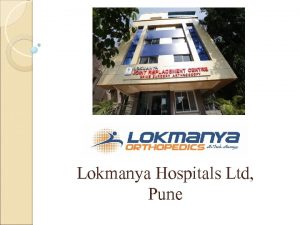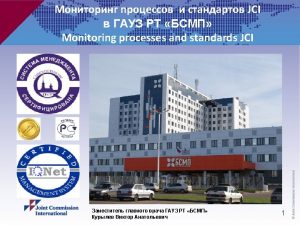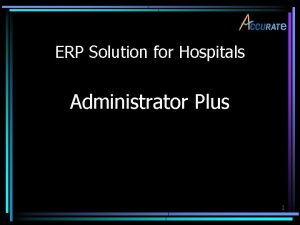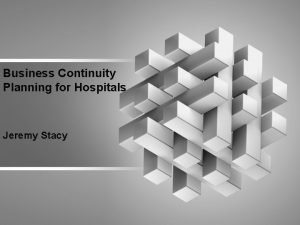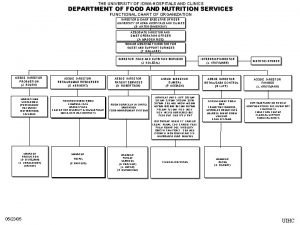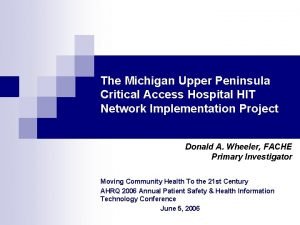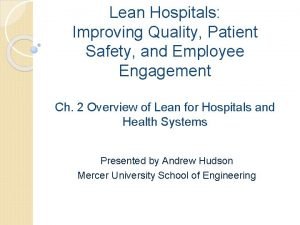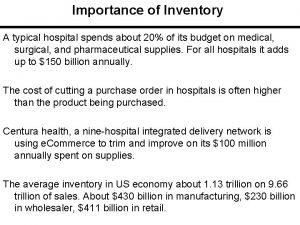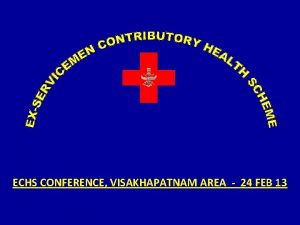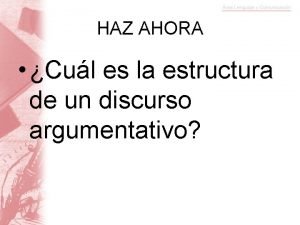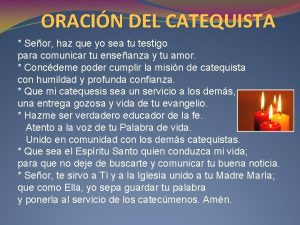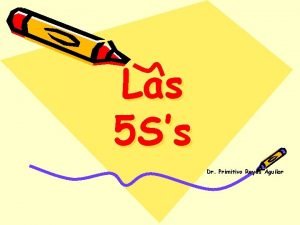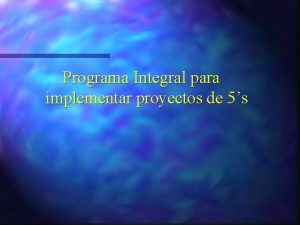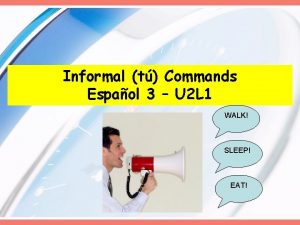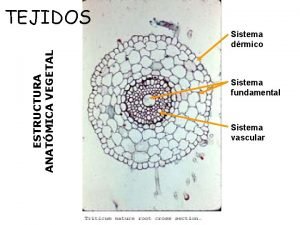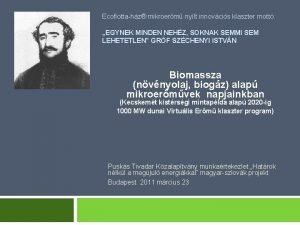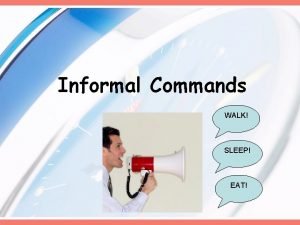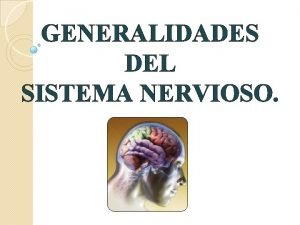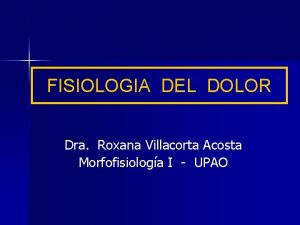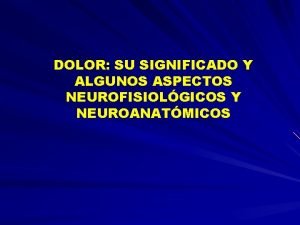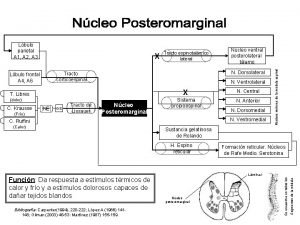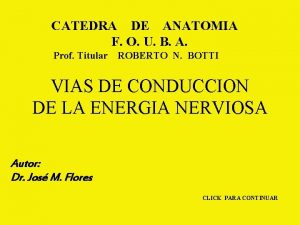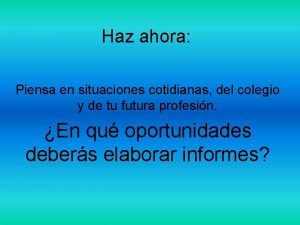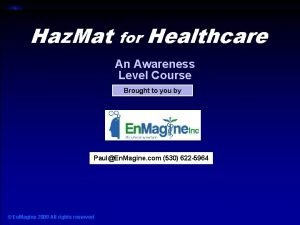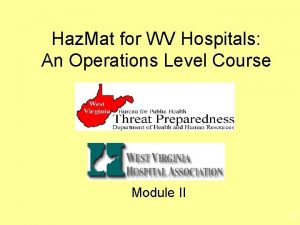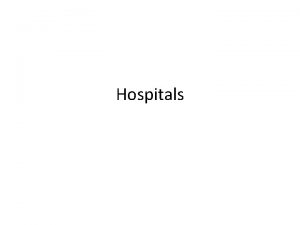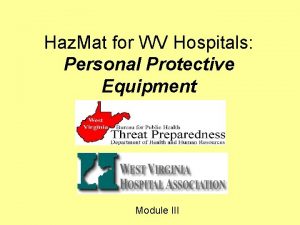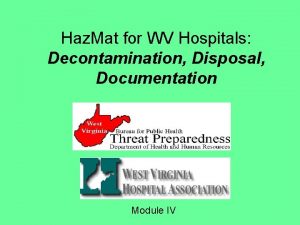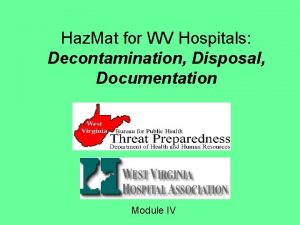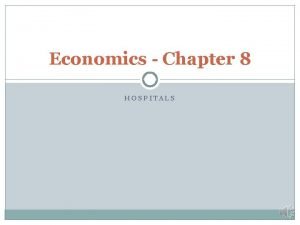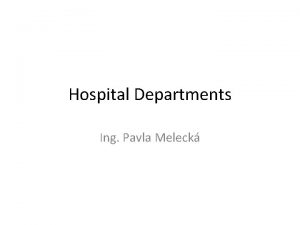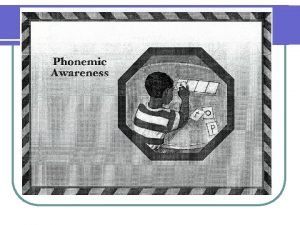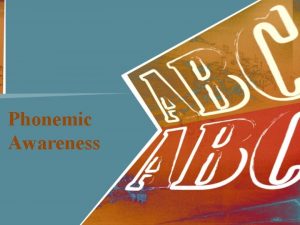Haz Mat for WV Hospitals An Awareness Level



























































- Slides: 59

Haz Mat for WV Hospitals: An Awareness Level Course Module I

This course was developed by En. Magine, who we wish to gratefully acknowledge. The material has been modified by WV DHHR in cooperation with the West Virginia Hospital Association’s Disaster Preparedness Task Force in the teaching of Hospital Decon. We especially wish to thank Kevin Davis of Weirton Medical Center for his work in modifying this material.

Abbreviations • • • Haz. Mat: hazardous materials Decon: decontamination FRA: first responder awareness FRO: first responder operations WMD: weapons of mass destruction MSDS: materials safety data sheet

Who needs to take the Awareness Level Course? • Hospital personnel “who are likely to be exposed to patients that have been contaminated due to a hazardous substance release/incident or a bioterrorism incident coming to the hospital. ”

Who needs to take the Operations Level Course? • Hospital personnel “who are part of a Hospital Haz. Mat Decon Team that is part of the initial response in a defensive action. ”

Regulations • The Occupational Safety and Health Administration has a mandate to ensure that employers provide a safe and healthful workplace. • OSHA has recommended a minimum of 8 hours of training for Healthcare Workers who may come in contact with hazardous or bioterrorism materials.

Haz. Mat for Healthcare at the Awareness Level Objectives • What are: – Hazardous/Bioterrorism Material? – The risks and problems that can occur?

Awareness Objectives (continued) • How can we: – Recognize a contaminated patient – Identify characteristics of a chemical/bioterrorism incident – Implementing the Hospital Haz. Mat Response Process – Respond safely and effectively – Make proper notifications – Isolate the patient/patients and deny entry – Conduct Directed Self-Decon

Definition - SIN • S = Safety • I = Isolation • N = Notifications Contaminated Patients SIN

Definition of a Hazardous Material • There is no one definition. • OSHA definition: Hazardous Chemical: Any substance to which exposure “results or may result in adverse affects on the health or safety of employees: ” or “any chemical which is a physical hazard or a health hazard. ” 29 CFR 1910. 1200 (c)

What does the regulation state? • "Hazardous substance" means any substance designated or listed under (A) through (D) of this definition, exposure to which results or may result in adverse effects on the health or safety of employees: • [A] Any substance defined under section 101(14) of CERCLA; • [B] Any biologic agent and other disease causing agent which after release into the environment and upon exposure, ingestion, inhalation, or assimilation into any person, either directly from the environment or indirectly by ingestion through food chains, will or may reasonably be anticipated to cause death, disease, behavioral abnormalities, cancer, genetic mutation, physiological malfunctions (including malfunctions in reproduction) or physical deformations in such persons or their offspring. • [C] Any substance listed by the U. S. Department of Transportation as hazardous materials under 49 CFR 172. 101 and appendices; and • [D] Hazardous waste as herein defined.

Examples of Hazardous Materials (OSHA Hazardous Waste Operations and Emergency Response Standard 29 CFR 1910. 120 [Title 8 § 5192 CCR]) • Chemicals that cause cancer • Biohazards or infectious materials • Chemicals that can burn the skin or eyes on contact • Radioactive materials

Examples of Hazardous Materials (Continued) • Chemicals that can catch fire or explode • Chemicals that can cause violent chemical reactions • Poisons • Unknown chemicals

What is the impact of a Hazardous Materials incident: • To YOU • To the EMERGENCY DEPARTMENT • To the HOSPITAL • To your COMMUNITY

Watch Closely

Nomenclature and Accuracy SIN • TLA’s - Three Letter Acronyms • Glossary ER WMD G E P P

Hazard Classes and things that act like them

Explosives (Class 1) • • Commercial explosives Fireworks Ammunition Fertilizer bombs (Ammonium nitrate & fuel oil) • Hydrazine (A flammable liquid. Forms explosive mixtures [hypergolic] - a high energy rocket fuel, corrosive and poisonous)

Compressed Gases (Class 2) • • • Acetylene Propane Oxygen Nitrous Oxide Carbon Dioxide Anesthetic Gases Medical Air Argon • • Hydrogen Sulfide Phosgene Methyl Bromide Ammonia

Flammable/Combustible Liquids (Class 3) • • • Diesel Alcohols Xylene Gasoline Acetone Methanol

Flammable Solids (Class 4) • • Naphthalene Sodium Carbon Barium

Oxidizers & Organic Peroxides (Class 5) • Oxygen (actually a compressed gas or cryogenic liquid) • Peroxyacetic Acid • Red Fuming Nitric Acid (a corrosive) • Nitrogen Tetroxide • Ammonium Nitrate • Methyl Ethyl Ketone Peroxide • Fluorine, Chlorine (also poison, compressed gas, corrosive) Boston Harbor

Poisonous & Infectious Materials (Class 6) • • Phenol (Carbolic Acid) Chemotherapy drugs Biohazardous Waste Blood Borne Pathogens Solvents Sewage Vesicants (blistering agent, Doxorubicine, Vincristine) • Mercury • ETO (ethylene oxide) • Glutaraldehyde & Formaldehyde • • • Pesticides WMD (Sarin, VX) Solvents Bioterrorism Tear Gas Vesicants (mustard, Lewisite)

Radioactive Materials (Class 7) • Nuclear Medicine • • Terrorist use Military Facilities Nuclear Reactors Commercial/Research facilities • Industrial x-ray material

Corrosive Materials (Class 8) • Lab acids (e. g. , Hydrochloric Acid) • Boiler treatment caustics • • • Pool chemicals Sulfuric acid Nitric acid Muriatic acid Sodium Hydroxide Chlorine, Fluorine

Miscellaneous. Hazardous Materials (Class 9) • Hazardous waste • Asbestos • Anesthetics • Pepper spray/mace • Molten Sulfur

Unknown chemicals • Limitless

Definition of Spill Types • Incidental Spill - Spill that can be cleaned up in first 10 -15 minutes without risk of overexposure to employees under normal conditions. • Emergency Response Spill - Requires Haz Mat Response if risk of overexposure to employees. (On Scene Decon)

Key Factors In Assessing a Patient/Patients • Any one of these factors can affect the type of Decon: – Product – Time - Vapor levels rise above regulatory levels that they were exposed to – Volume of Spill – Body surface area covered – Concentration – Ventilation - Type and location – Personnel Location - closer = worse

Intentional Events So now, let’s talk about Terrorism WMD and

Terrorism We all know what terrorism is, but the official definition is: “The unlawful use of force against persons or property to intimidate or coerce a government, the civilian population, or any segment there of, in the furtherance of political or social objectives. ”

Types of Weapons of Mass Destruction (WMD) B - Biological N - Nuclear I - Incendiary C - Chemical E - Explosive

Terrorism is a “menace, with malice. ” A biological terrorism event (the “B” of BNICE) is an “Infectious Disease Outbreak”. A chemical terrorism event (the “N&C” of B-NICE) is a “Hazardous Materials Incident”. A fire or explosion terrorism event (the “I&E” of B-NICE) is a “Burn and/or Mass Casualty-Trauma Incident”.

Biologic Terrorism Is an Infectious Disease Event Types of Agents • Bacteria Anthrax Plague Tularemia • Viruses Smallpox Hemorrhagic Fevers (Ebola) Venezuelan equine encephalitis (VEE) • Toxins Botulism Ricin

Chemical Terrorism Is a Haz. Mat Event Types of Agents • Nerve Sarin VX • Blister (vesicants) - Mustard Lewisite • Blood Cyanide • Choking Chlorine Phosgene • Irritating Tear Gas Pepper Spray

Potential Probability vs. Impact NUCLEAR WEAPON BIOLOGICAL AGENT IMPROVISED NUCLEAR DEVICE POTENTIAL IMPACT RADIOACTIVE MATERIAL PROBABILITY / LIKELIHOOD CHEMICAL AGENT OR TOXIC INDUSTRIAL CHEMICAL

Hazardous Materials Recognition & Safety • Recognition leads to safety • Safety leads to lives preserved

Not Always Reported as Haz. Mats • Traffic accident • Medical aid • Fire, person down, etc. Initial report may not indicate presence of hazardous materials!

Haz. Mat Recognition Clues Markings and Colors Placards and Labels

Haz. Mat Recognition Clues Material Safety Data Sheets (MSDS) MSDS Diforsuranol Make out your will. It’s all over. Death imminent. No hope for you pal! Bad stuff! Touch this and you die. Call 911 now! • Should be available for each Haz. Mat in the workplace – Required by OSHA Hazard Communication regulations • Provides valuable information

Clues from the Patient • • • Patient has an unusual odor Patient has a strange liquid/powder on them Patient was involved in a chemical fire Patient talks about being in a strange vapor Patients skin is an unusual color

“Clues” are “Clues”! • They are: – Warnings – Notes of caution – Indications of things to come – But not always all the answers!

Triage Clues • Liquids or powders on the patient • Odors • What were they doing when this happened? • Where were they? • How long ago did the accident occur? Need to recognize and act fast and save your ED !

Information Resources • • Container Labels MSDS Poison Control Emergency Response Guide (ERG) • Computer programs • People • Chem. Trek ERG Do not rely on only one source of information. Be skeptical!!

SAFETY (First, last, and always) SIN • • • Don’t be a Dead Hero! Get the big picture. Can you handle it? What are the risks? What do you know? What don’t you know?

SIN ISOLATE • Isolate the scene and deny entry. – (If someone has something on them don’t let them go away. If others haven’t been exposed don’t let them have contact with the chemicals. )

Perimeters & Control Zones • Purpose of Perimeters & Control Zones – Ensure safety and isolation – Control the scene (ED and Decon Area) – Limit spread of contamination – Allow for safe working area

Control Zones Yellow Zone Hot Zone Green Zone

SIN NOTIFY • Follow Your Hospital’s Plan! • Call your Supervisor • Activate your Haz. Mat response team? ? • Utilize your Hospital Emergency Incident Command System (HEICS)

Ask Yourself • What are your first concerns? – Is this patient contaminated with a hazardous material? Review the clues! – How can contamination of the ED and its occupants (patients and staff) be minimized? – How can the patient be managed so that he can receive medical care?

SIN Actions What are your first actions? Safety • Do not touch the patient or allow anyone else to have patient contact. Isolation • Get them out of the ED to a predesignated location!!!! Notify • Activate your facility’s protocol for a hazardous material incident.

Strip and Shower! • Removal of clothing eliminates 80% of the contamination!

Directed Self Decontamination

Directed Self Decontamination

How soap (surfactants) works • Soap molecules are composed of a head (that likes water, hydrophilic) and a tail (that likes oils, hydrophobic/oleophilic) • Soap : – breaks the surface tension of the water and make the “water wetter. ” – also attracts the water soluble and oil soluble contaminants and sends them away.

Watch Closely

Self Decon Issues • Improvise using a large opaque plastic bag • Place potentially contaminated clothing in double clear plastic bags • Place valuables in a separate sealable clear plastic bag • Track patients • Clothing a decontaminated patient

Awareness Module Summary • • • Recognize the contaminated patient Safety. Protect yourself, others. SIN Isolate. Deny entry. Notify. Activate hospitals emergency plan. Consider directed self decon

Questions?
 Mat för unga idrottare
Mat för unga idrottare Cvs privacy awareness training answers
Cvs privacy awareness training answers Va hospitals in alaska
Va hospitals in alaska Portsmouth hospitals nhs trust jobs
Portsmouth hospitals nhs trust jobs Portsmouth hospital trust values
Portsmouth hospital trust values Lean hospitals mark graban
Lean hospitals mark graban Process governance
Process governance Use of computer at hospital
Use of computer at hospital University hospitals
University hospitals Uhcw occupational health telephone number
Uhcw occupational health telephone number National accreditation board for hospitals
National accreditation board for hospitals West calcasieu cameron 3767 baton rouge la 70821
West calcasieu cameron 3767 baton rouge la 70821 Fhpl network hospitals in hyderabad
Fhpl network hospitals in hyderabad Dnv vs joint commission
Dnv vs joint commission Difference between mandatory and voluntary
Difference between mandatory and voluntary Bed management in hospitals
Bed management in hospitals Uhl management structure
Uhl management structure Lokmanya orthopedic hospital pune
Lokmanya orthopedic hospital pune Ipsg 1-6
Ipsg 1-6 Erp for hospitals
Erp for hospitals Bcp for hospitals
Bcp for hospitals University of iowa hospitals and clinics
University of iowa hospitals and clinics Mghs wheelers
Mghs wheelers Lean hospitals
Lean hospitals Strengths and weaknesses examples
Strengths and weaknesses examples 2 bin inventory hospitals
2 bin inventory hospitals Echs polyclinic visakhapatnam
Echs polyclinic visakhapatnam Medisep hospitals in kerala
Medisep hospitals in kerala Via piramidal y via extrapiramidal
Via piramidal y via extrapiramidal 3 affirmative commands in spanish
3 affirmative commands in spanish Ejemplos de argumentos de confianza del emisor
Ejemplos de argumentos de confianza del emisor Oracion del catequista señor haz que yo sea tu testigo
Oracion del catequista señor haz que yo sea tu testigo Avanza por mas palabras de aliento
Avanza por mas palabras de aliento Di lo que haces haz lo que dices y demuéstralo
Di lo que haces haz lo que dices y demuéstralo Proyectos de 5s
Proyectos de 5s Sió csárda
Sió csárda Affirmative verbs spanish
Affirmative verbs spanish Haplostela
Haplostela Acabar de infinitive
Acabar de infinitive Haz ahora
Haz ahora Haz plant
Haz plant Ház terv
Ház terv Vin di sal haz ten ve pon se
Vin di sal haz ten ve pon se Archicerebelo
Archicerebelo Társasház alaprajz lekérdezés
Társasház alaprajz lekérdezés Haz o has
Haz o has Cuadro sinóptico del sistema nervioso
Cuadro sinóptico del sistema nervioso Haz neoespinotalamico
Haz neoespinotalamico Haz una lista de los trabajos que realiza ildara
Haz una lista de los trabajos que realiza ildara Lorem ipsum dolor sit amet significado
Lorem ipsum dolor sit amet significado Tracto de lissauer
Tracto de lissauer Haz de flechsig
Haz de flechsig Spanish song with commands
Spanish song with commands Ven di sal haz ten
Ven di sal haz ten Haz ahora
Haz ahora �zge�mi? haz?rlama
�zge�mi? haz?rlama Insanda estetik haz uyandıran
Insanda estetik haz uyandıran Laura sinema
Laura sinema Ertsey attila
Ertsey attila Haz in welding
Haz in welding


